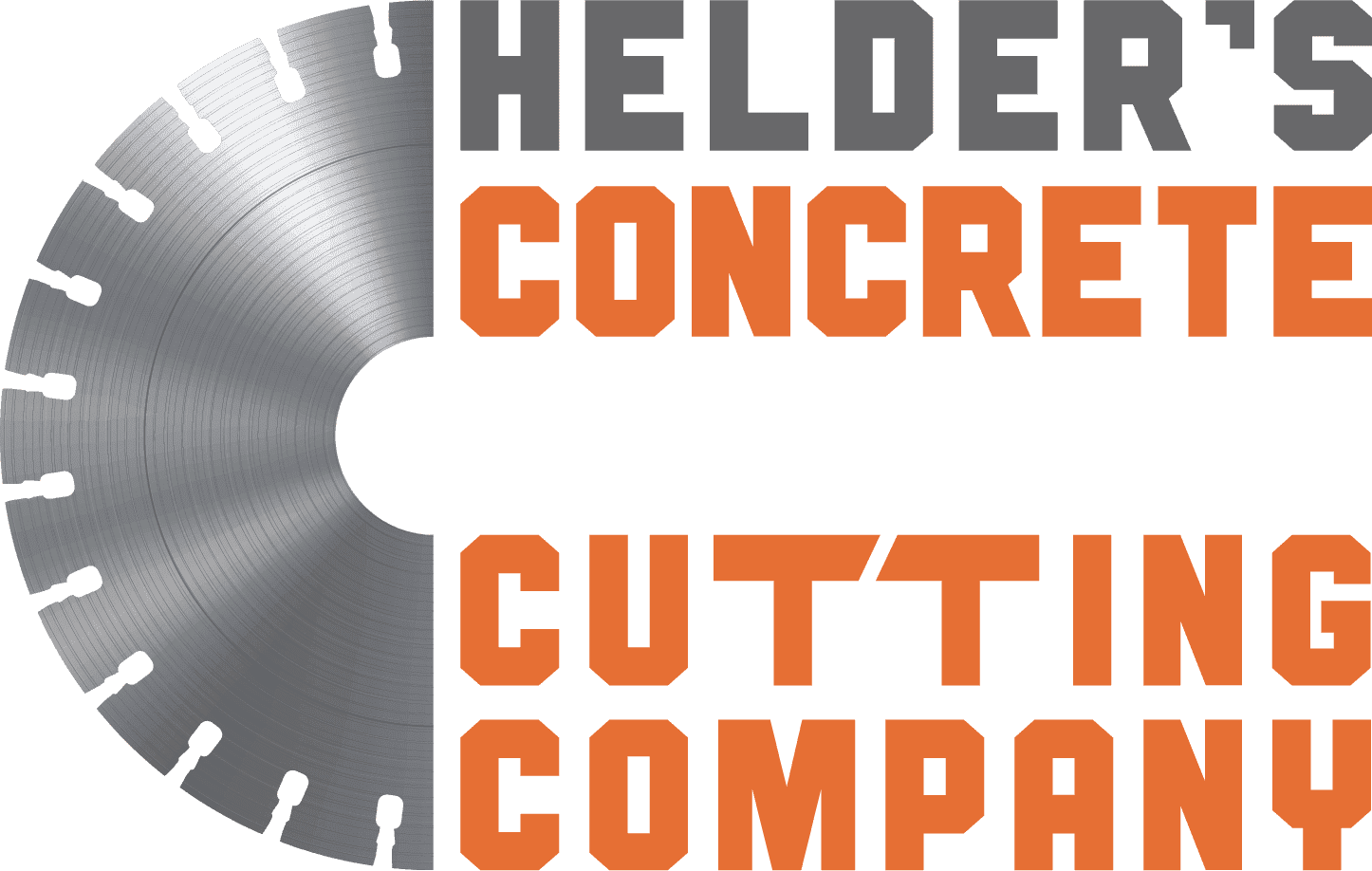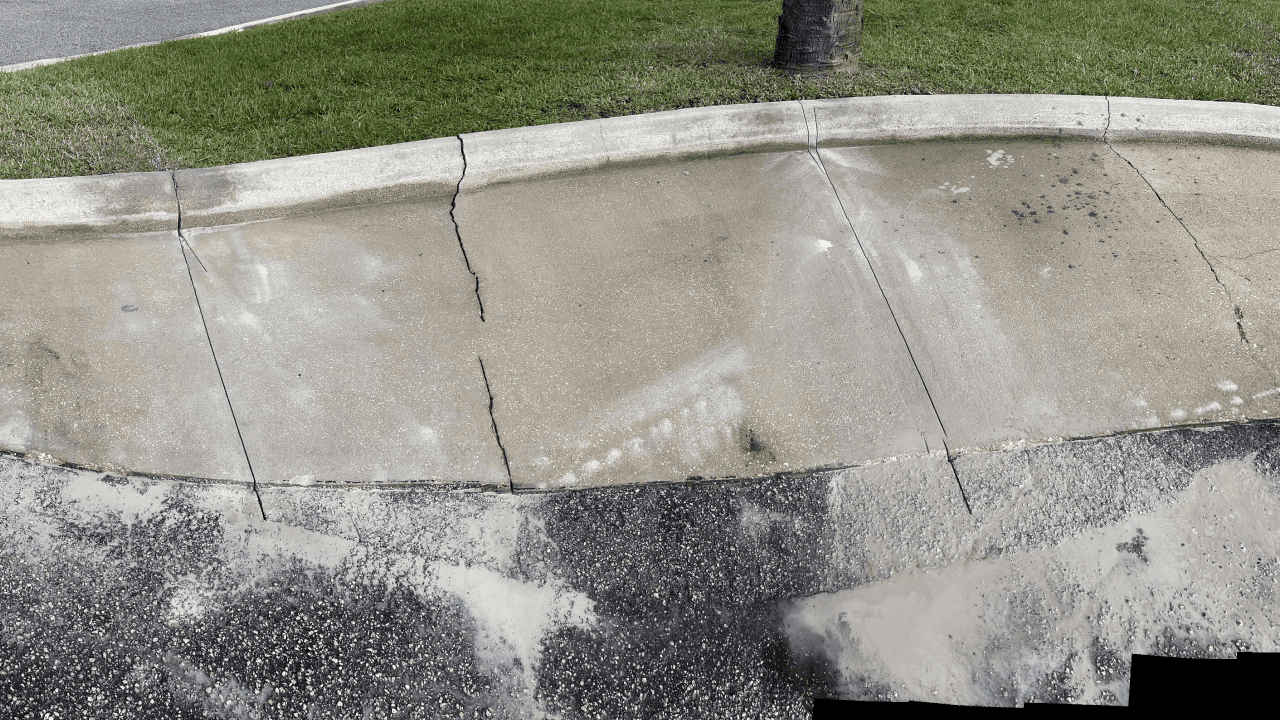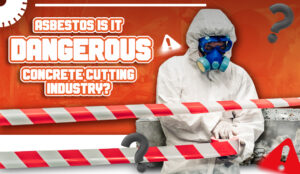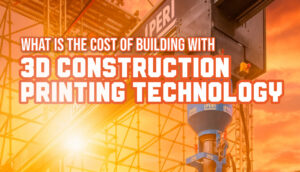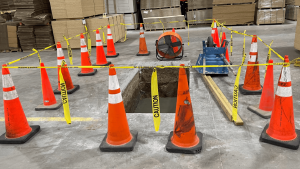1.- Regular Concrete Cleaning
Regular concrete cleaning is essential to maintain its appearance and durability over time. Concrete surfaces, whether in driveways, patios, or walkways, tend to accumulate dirt, leaves, mold, and oil stains over time. This buildup not only affects aesthetics but can also make the concrete slippery and hazardous. To address these issues, regular cleaning is crucial. High-pressure water jetting is a common option for removing most stains and dirt, and there are specific concrete cleaners to treat persistent stains like oil or grease. Regular cleaning not only enhances the appearance of concrete but also extends its lifespan and contributes to a safer environment.
In summary, keeping concrete surfaces clean is an essential part of maintenance. It helps preserve its appearance, prevents slips and falls, and prolongs the lifespan of concrete, thus protecting your investment.
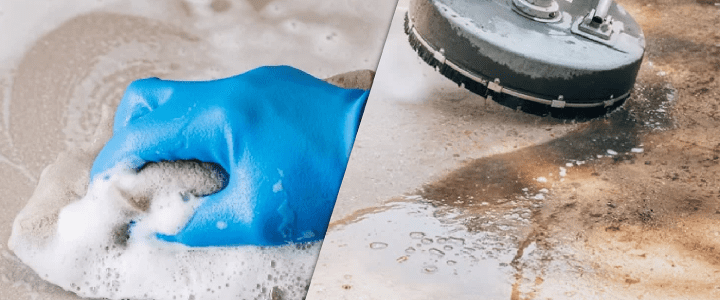
2.- Drainage Control
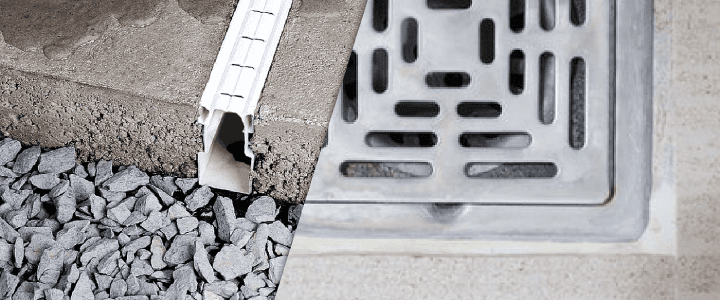
3.- Timely Repair
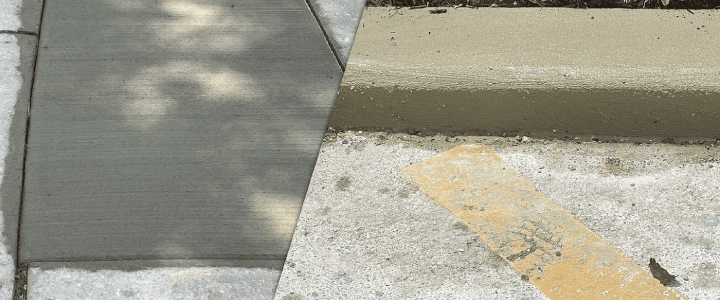
4.- Cleaning Oil Stains
If you have oil stains on your concrete driveway, it’s important to address them promptly. To remove them, you can use a detergent solution and a brush. Oil stains not only affect the aesthetics of the concrete surface, making it look dirty and worn, but they can also penetrate the concrete, which can weaken its structure over time. Taking early action to clean oil stains not only enhances the appearance of your concrete but also helps preserve its integrity and extend its lifespan.
It’s important to remember that the sooner you address oil stains, the better the results will be. Regular cleaning and proper maintenance are essential to maintain the beauty and durability of your concrete surfaces, and removing oil stains is an important step in this process.
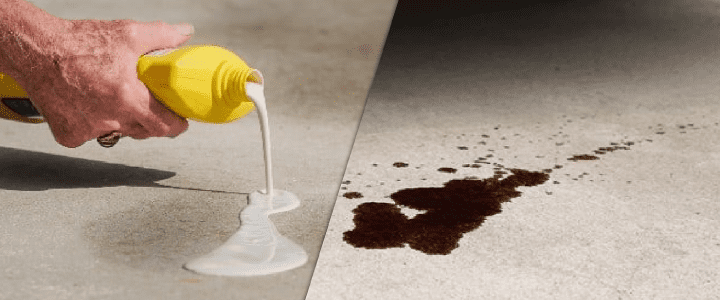
5.- Avoid Heavy Objects Impact
It’s important to avoid letting heavy objects, such as gardening equipment, drop abruptly onto concrete surfaces. The sudden impact of heavy objects can lead to cracks and damage in the concrete, which may eventually necessitate costly repairs. To prevent this type of damage, it is advisable to take preventive measures.
An effective way to prevent the occurrence of cracks and damage in the concrete is to place pads or wooden boards under the objects before setting them on the surface. These pads or wooden boards help distribute the weight evenly, reducing point pressure on the concrete. By doing so, you are protecting both the concrete and the objects placed on it. This simple and preventive practice can save you time and money in the long run by avoiding the need for expensive concrete repairs or replacements.
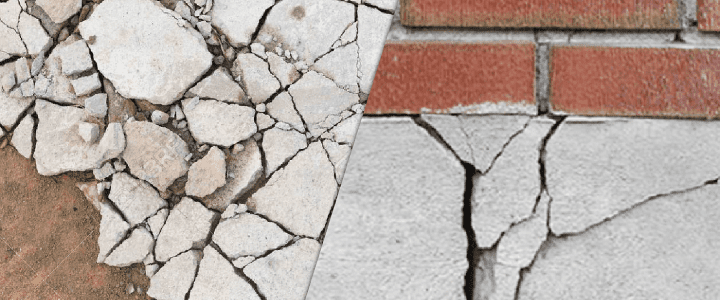
Extra: Avoid Parking Heavy Vehicles
It’s important to take precautions to avoid parking heavy vehicles, such as trucks, on concrete surfaces that are not specifically designed to withstand that type of load. These surfaces, such as residential driveways or conventional vehicle entrances, may not be able to withstand the extreme pressure and weight exerted by heavy vehicles. Parking trucks or other heavy vehicles on such areas can result in sinking and significant damage.
When a heavy vehicle is parked on a concrete surface not designed for it, the concentrated pressure can cause the concrete to give way, leading to sinking, cracks, and, in extreme cases, structural damage. To prevent these issues, it is advisable to park heavy vehicles in areas specifically designed to support their weight, such as appropriate parking lots or industrial areas. This not only protects the existing concrete but also avoids costly repairs and ensures the safety of people and vehicles.

These additional tips are highly useful to keep your concrete surfaces in excellent condition without requiring advanced construction knowledge. The key to preserving the integrity and appeal of concrete surfaces in your home or property is prevention and ongoing maintenance. By following these practices, you not only ensure that the concrete looks great but also extend its lifespan, which, in turn, helps you save money on costly long-term repairs.
Prevention, such as avoiding the parking of heavy vehicles in non-designated areas or protecting concrete from chemical spills, is fundamental for preventing damage and maintaining safety. Ongoing maintenance, including regular cleaning and timely repair of minor cracks and damages, is equally important. Keeping these practices in mind will allow you to enjoy durable and attractive concrete surfaces, benefiting both your property and your wallet over time.
